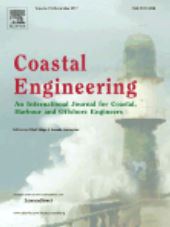Using Historical Storms for Flood Risk Management
The 1872 Storm in South Sweden
- Publication
- Citation
Caroline Fredriksson, Grit Martinez, Magnus Larson, and Beate Feldmann Eellend, Using Historical Storms for Flood Risk Management: The 1872 Storm in South Sweden, In: Lakhani, Vikas, and Eveline de Smalen, eds. "Sites of Remembering: Landscapes, Lessons, Policies," RCC Perspectives: Transformations in Environment and Society 2018, DOI: doi.org/10.5282/rcc/8481
The volume "Sites of Remembering: Landscapes, Lessons, Policies" of the Rachel Carson Centres' journal called "Perspectives" bridges the gap between humanities research and public policy. It uses a diverse selection of examples from worldwide memory studies to illuminate how society can employ lessons from the past in building resilience to ecological and humanitarian disasters. Dr. Grit Martinez of Ecologic Institute is a co-author. The volume is available for download.
Based on the findings of the volume three recommendations are suggested:
- Citizens' memories are a source of local knowledge and hence need to be utilized
- Resilience in communities can be supported by recognizing the role of both remembering and forgetting
- Counternarratives need to be acknowledged
Memories of citizens provide a vital source of knowledge to policy makers. Engaging with these memories enhances the transmission of heritage while legitimizing people's experience and therefore policy.
In the essay "Using Historical Storms for Flood Risk Management: The 1872 Storm in South Sweden", the authors Caroline Fredriksson (Lund University), Dr. Grit Martinez (Ecologic Institute), Magnus Larson (Lund University), and Beate Feldmann Eellend (National Library Sweden) discuss the relationship between flood risk management and collective memory. The case study illustrates the difference in responses to the 1872 storm flood disaster amongst the three affected countries: Sweden, Germany and Denmark. The analysis shows how a specific risk awareness evolved over time, which is illustrated in detail on the flood-prone areas of Sweden, and what that means for policy making in Sweden today.






